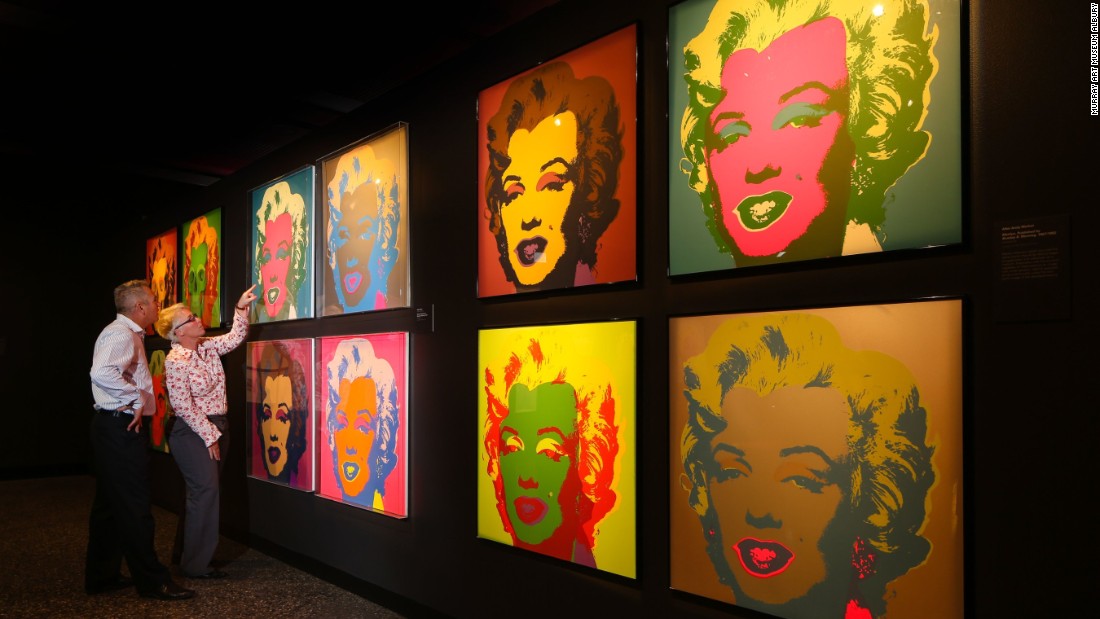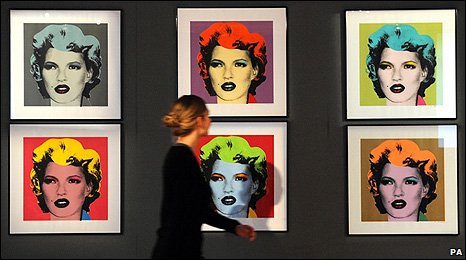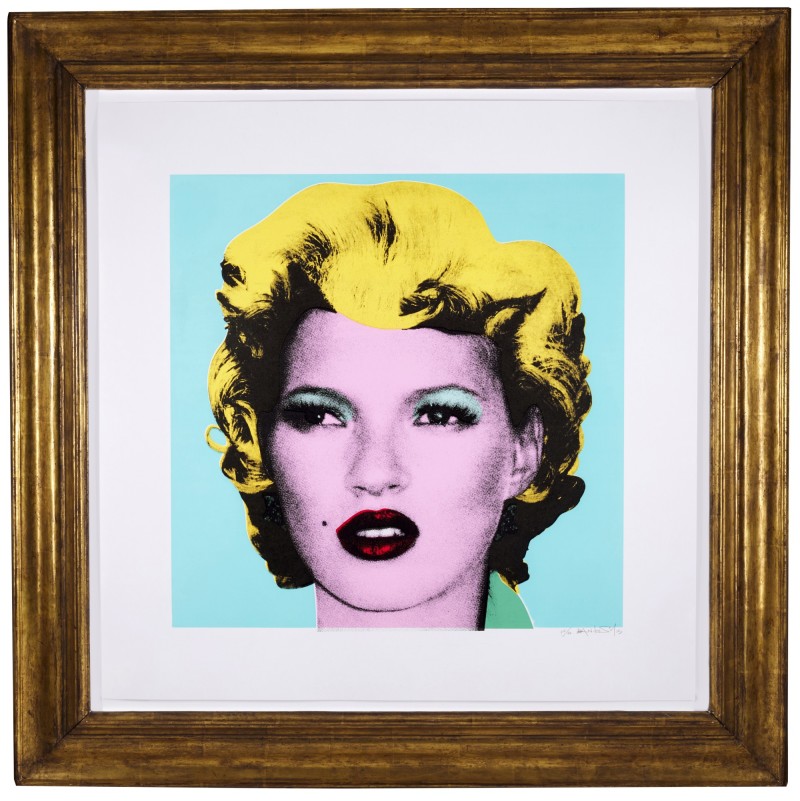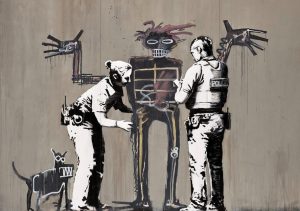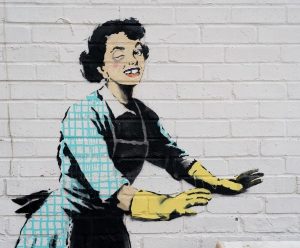
Kate Moss, 2005
Stencil spray-paint on canvas
80×80 cm (31 1/2 x 31 1/2 inches)
Edition: 5
Exhibited
Crude Oils, London, 2005



In doing so, Banksy directly engages with the legacy of Western art history, in a manner not dissimilar to Marcel Duchamp’s infamous interpretation of Leonardo da Vinci’s Mona Lisa, L.H.O.O.Q. in 1919, in which the Dada artist drew a moustache and goatee on a postcard reproduction of the work. However, Banksy takes his artistic disruption further, executing his works in the style and technique of their original makers, adopting the screenprint technique typical of Warhol’s process in Kate Moss.
Not only does Banksy appropriate Warhol’s most famous motif, the face of Marilyn Monroe, the artist also places his playful stamp on the works of Vincent Van Gogh, Claude Monet, Jack Vettriano and Edward Hopper. Littering Monet’s Impressionist masterpiece of a water garden in Giverny with a traffic cone and partly submerged, upended shopping trolleys, Banksy highlights the reality of our world, dismantling these idealized visions from the past.

BANKSY, SHOW ME THE MONET, 2005, OIL ON CANVAS, IN ARTIST’S FRAME, SOTHEBYS LONDON, 21 OCTOBER 2020, SOLD FOR US$9,924,563
Alongside Kate moss and Banksy’s Monet, Show Me The Monet, the artist depicts Van Gogh’s seminal sunflowers in a state of decay; a Renaissance portrait of the Virgin and Child listening to an iPod; and the sculpture of Venus with a traffic cone on her head, taking the audience through a reimagined view of art history.
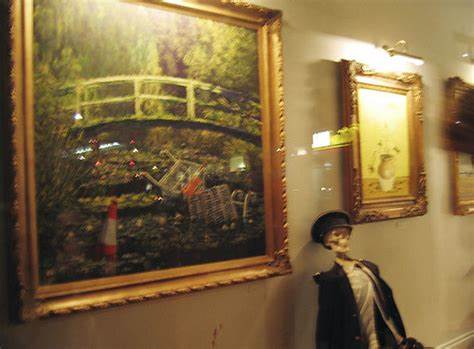
Banksy’s Kate Moss is an ebullient, rare example from the artist’s oeuvre, executed using screen-print on canvas, strikingly different to the street art interventions which had previously gained him notoriety. Neither the first nor the last to immortalize the great Kate Moss in art—her likeness reproduced by artists such as Marc Quinn, as seen in his arresting golden sculpture, Song of the Siren (2010)—Banksy’s work draws upon past icons of popular culture to create an emblematic image, definitive of 21st century art.

